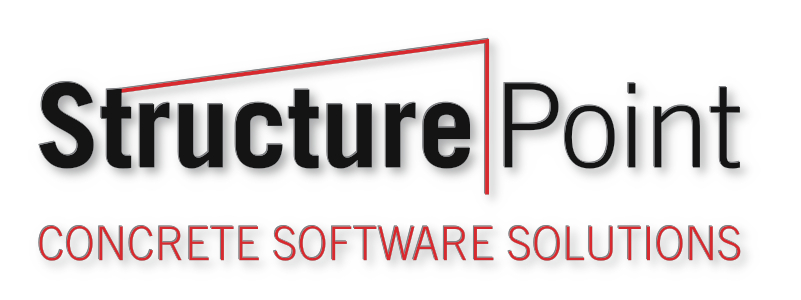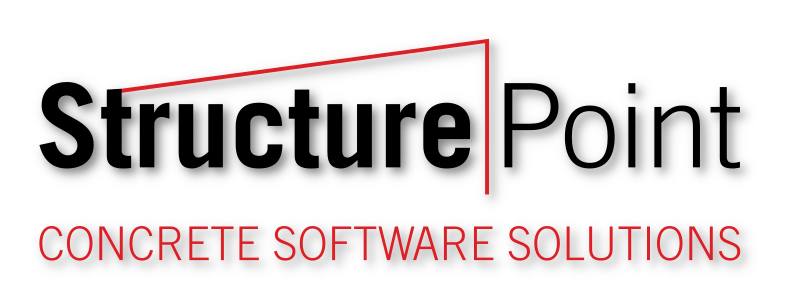ACI 318-19 Code Revisions Impact Assessment
09/19/2019

Overview
ACI Committee 318 has completed the technical work for “Building Code Requirements for Structural Concrete (ACI 318-19) and Commentary (ACI 318R-19).” The focus of this release was on technical changes to improve safety, economy, and sustainability, while introducing new technologies and ideas to advance the concrete industry.
General Themes & Summary
ACI 318-19 continues to unify and simplify code provisions started in 2014 reorganization of chapters by members. Nearly all the changes with software impact pertain to the design of beams and slabs in floor systems. While vertical and foundation elements are not as significantly impacted.
Some of the significant changes are:
- New provisions are introduced for the use of high-strength reinforcing
- New reinforcement strain limit is introduced for nonprestressed members
- Consideration of the bi-directional interaction of one-way shear is mandated
- Hanger reinforcement provisions are introduced
- Light-weight concrete modification factor calculation is modified
- Significant updates to one-way shear and two-way shear calculations are introduced
- Shrinkage and temperature reinforcement provisions are revised
Read the entire technical article outlining key changes from ACI 318-14 to ACI 318-19
Selected ACI 318-19 Code Changes
Chapter 7: One-Way Slabs
Reinforcement strain limit is revised:
ACI 318-19, 7.3.3.1 states that “nonprestressed slabs shall be tension-controlled in accordance with Table 21.2.2.” ACI 318-14 stated that “for nonprestressed slabs, et, shall be at least 0.004.”
This change leads to more economical designs for nonprestressed one-way slabs by eliminating the need to add more tension steel just to satisfy a lower steel strain limit without any gain in the flexural design strength due to reduced strength reduction factor, f. The software already utilizes the newly introduced provision. Therefore, there is no impact in implementation.
Chapter 8: Two-Way Slabs
Minimum slab thickness requirements are revised:
ACI 318-19, Table 8.3.1.1 for minimum thickness of nonprestressed two-way slabs without interior beams is revised to include Grade 80 reinforcement.
This change affects the calculation of minimum slab thickness for fy exceeding 60,000 psi. There is an impact on the input echo section of the software while the design and investigation processes remain unaffected.
Chapter 9: Beams
Reinforcement strain limit is revised:
ACI 318-19, 9.3.3.1 states that “Nonprestressed beams with Pu < 0.10 f’cAg shall be tension-controlled in accordance with Table 21.2.2.”
ACI 318-14 stated that “for nonprestressed beams with Pu < 0.10 f’cAg, et, shall be at least 0.004.”
This change results in more economical flexural designs for beams by eliminating the need to add more tension steel just to satisfy a lower steel strain limit without any gain in the flexural design strength due to reduced strength reduction factor, f. The software already utilizes the newly introduced provision. Therefore, there is no impact in implementation.
Chapter 10: Columns
Lower limit of 0.5db is introduced for transverse reinforcement index, Ktr, when fy > 80,000 psi:
ACI 318-19, 10.7.1.3 states that “along development and lap splice lengths of longitudinal bars with fy > 80,000 psi, Ktr, shall not be smaller than 0.5db.”
ACI 318-14 did not permit the use of reinforcement exceeding 80,000 psi for columns.
The requirement for a minimum value of Ktr along development and splice lengths improves ductility. This change does not affect the spColumn implementation as transverse reinforcement index, Ktr, is not utilized by the program.
Chapter 11: Walls
Upper limit for the nominal shear strength, Vn:
ACI 318-19, 11.5.4.2 states that “Vn at any horizontal section shall not exceed eight mulitples of square root of fc”
In ACI 318-14, the limit for in-plane shear, the nominal shear strength, Vn, was 10 mulitples .
This limit is intended to guard against diagonal compression failure in structural walls. The change creates consistency in the calculation of the in-plane shear strength of structural walls between Code chapters 18 (18.10.4) and 11 (11.5.4). However, it has no numerical impact in the software implementation as the d is already taken as 0.8lw and Acv equals to hlw.
Chapter 13: Foundations
Design criteria is redefined:
ACI 318-19, 13.2.6.1 states that “foundations shall be proportioned for bearing effects, stability against overturning and sliding at the soil-structure interface in accordance with the general building code.”
ACI 318-14, 13.2.6.1 stated that “foundations shall be proportioned to resist factored loads and induced reactions.”
which is covered within ACI 318-19, 13.2.6.3.
The reason for the change is to provide consistency with ASCE7-16 that include provisions for strength design for foundation geotechnical capacity, and to provide clarification of the requirements for foundation proportioning and design.

